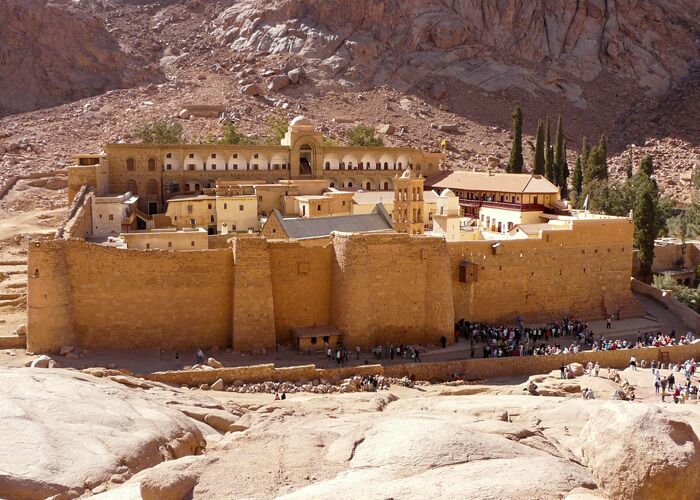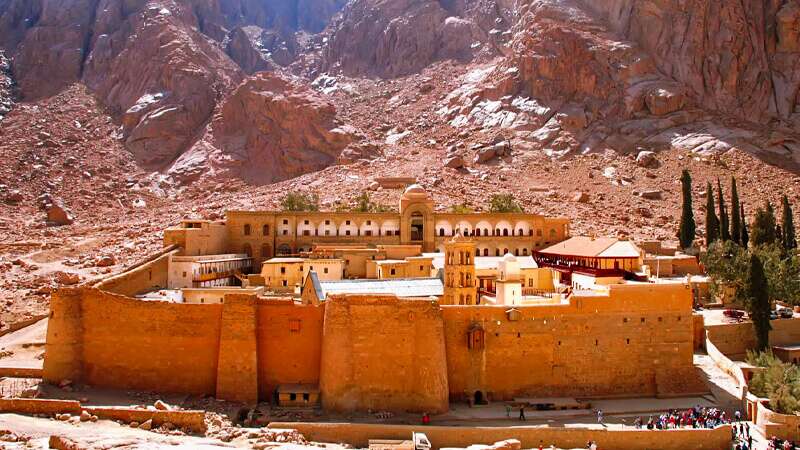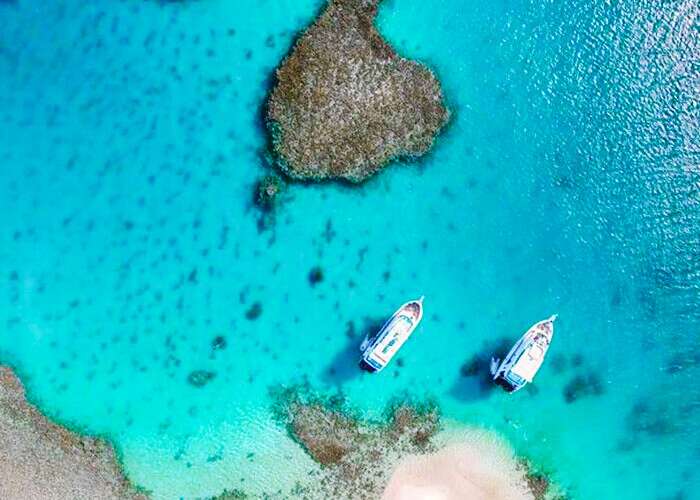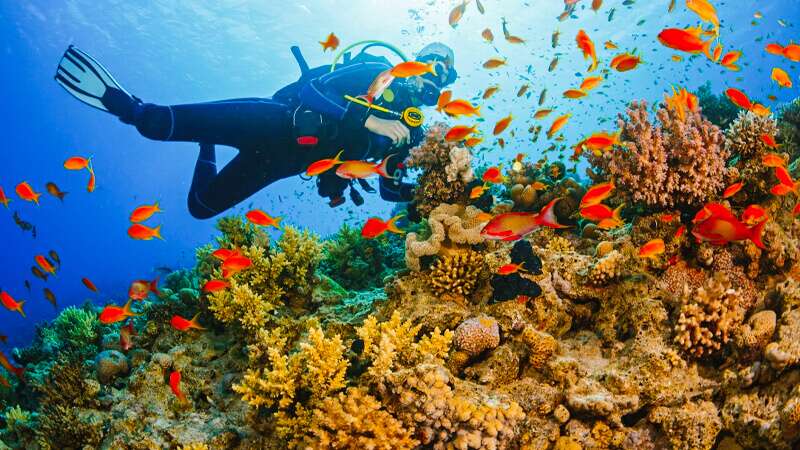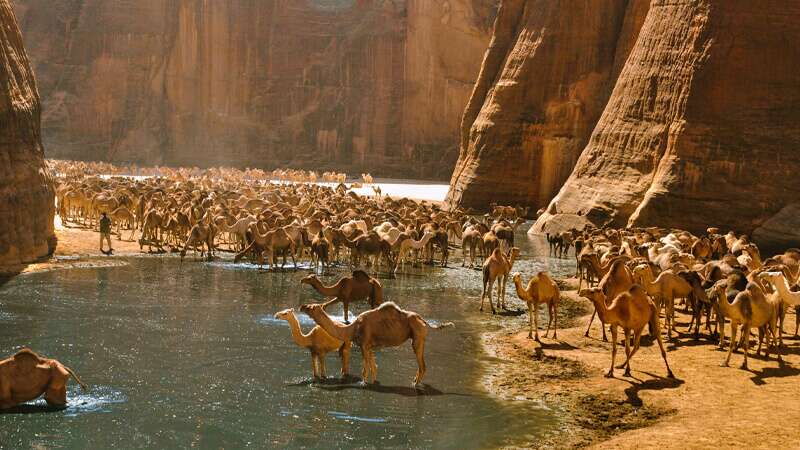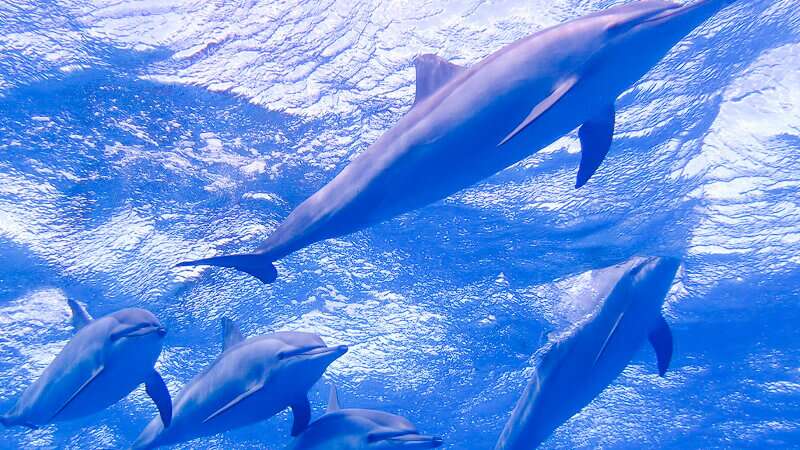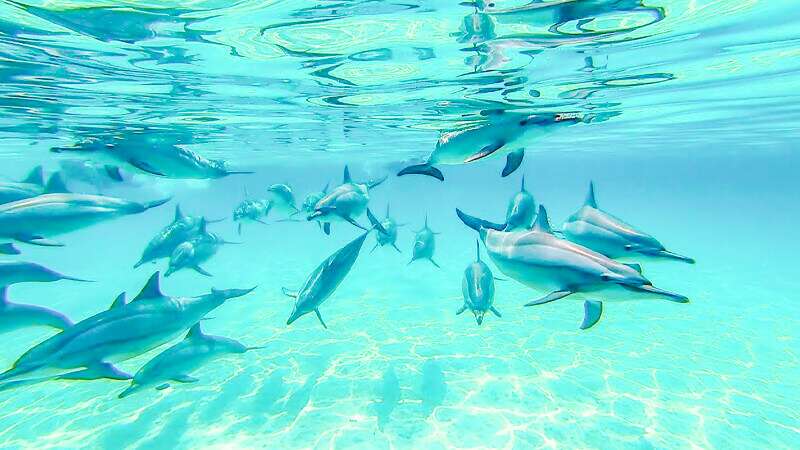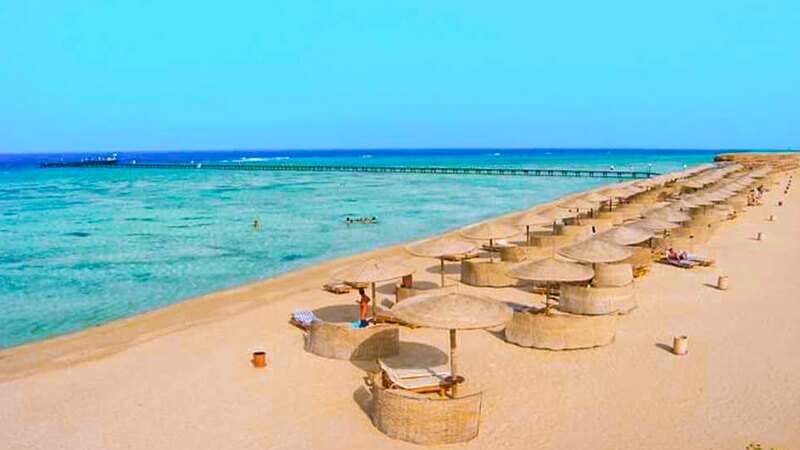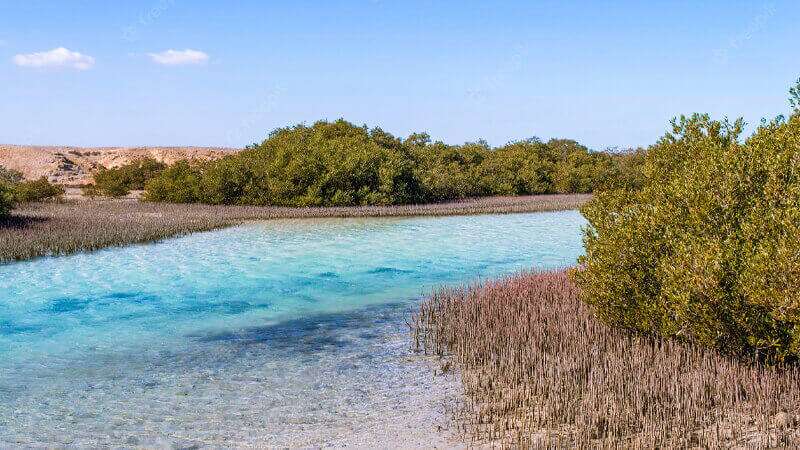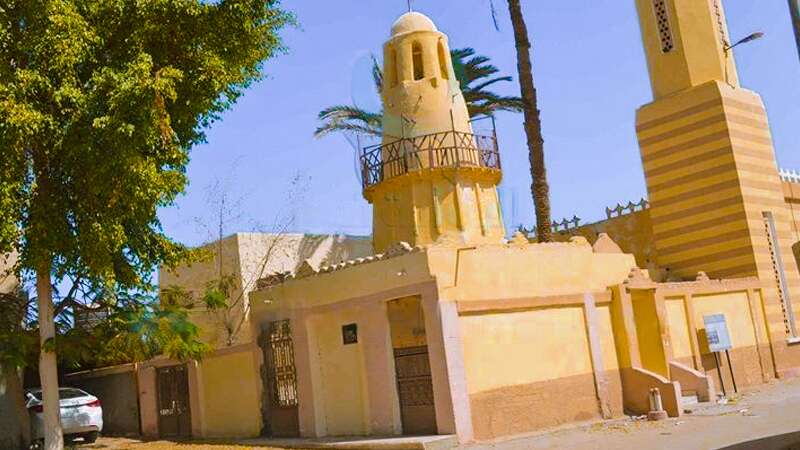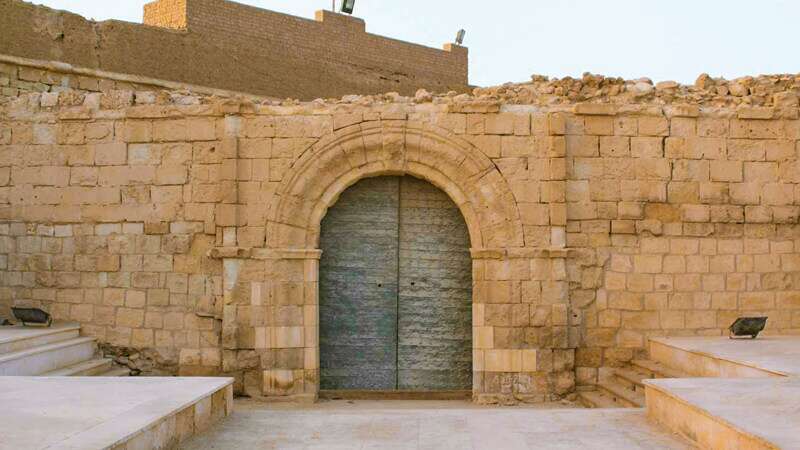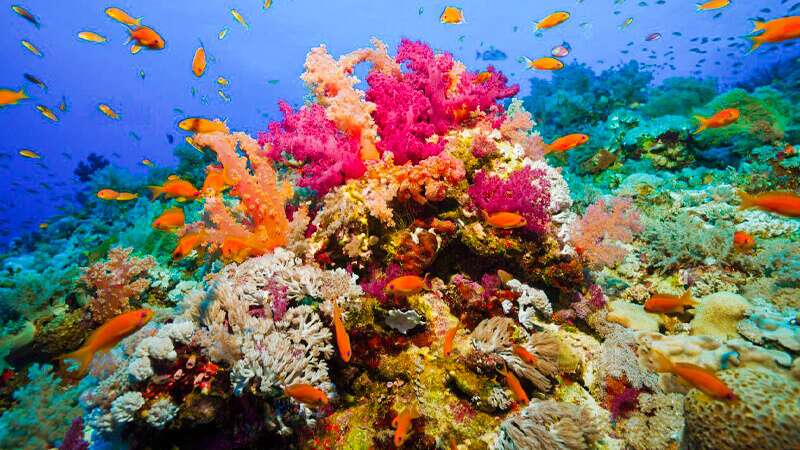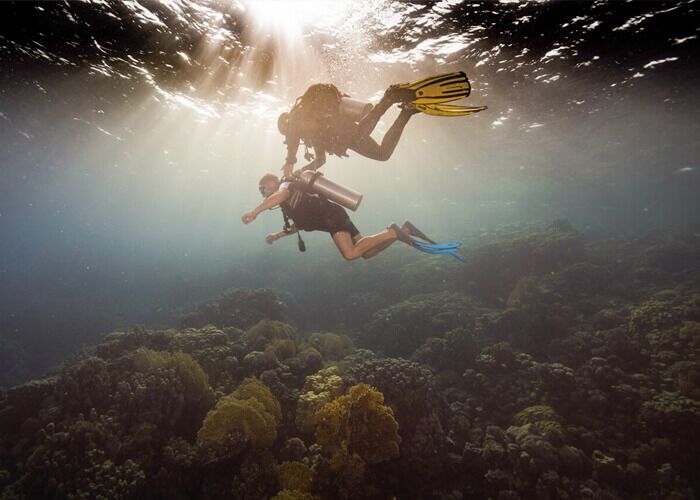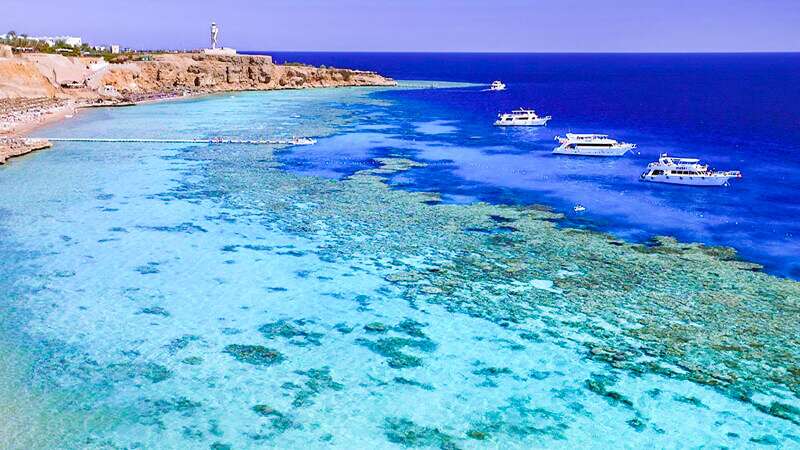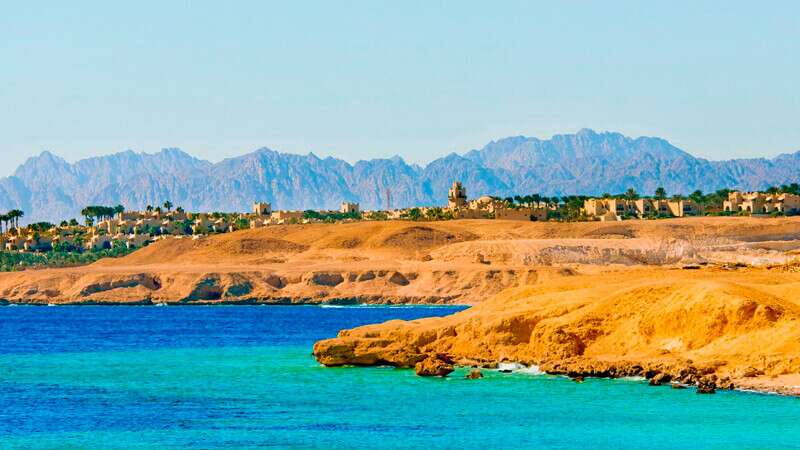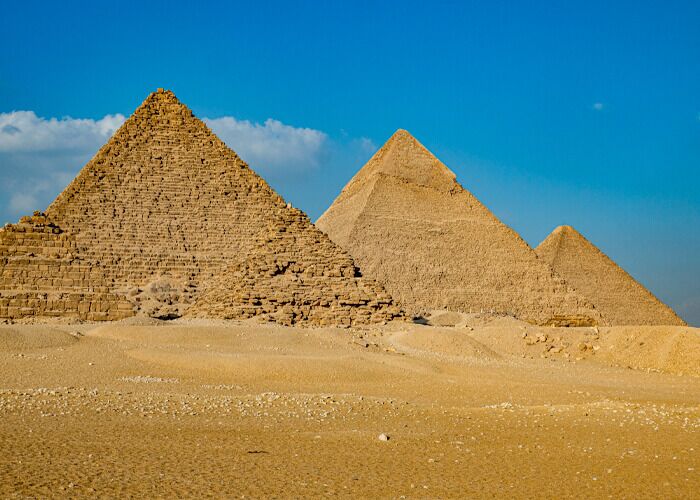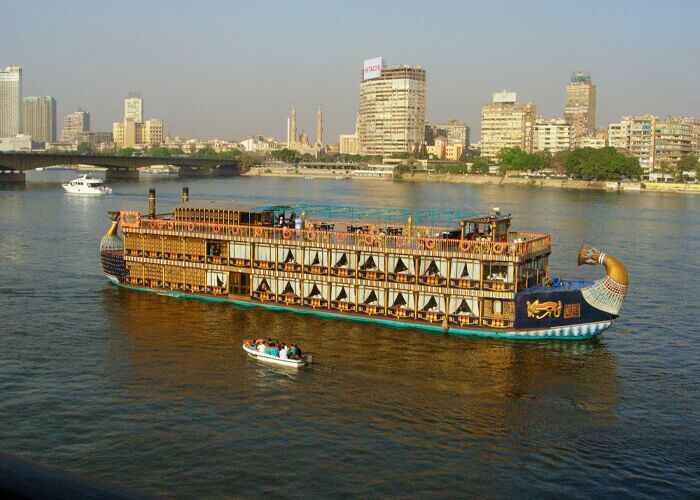Moses Mountain:
Where Is The Mount of Mosas?
Moses Mountain (Mount Sinai) is a mountain located in the South Sinai Governorate in Egypt; Its height is 2285 meters above sea level.
It was named Mount Moses after the Prophet Moses, who his Lord spoke to on this mountain and
who received the Ten Commandments according to Judaism, Christianity, and Islam.
The Holy Mountains, also known as Mount Sinai, are a group of mountains in the Sinai Peninsula that go by the name of the traditional Mount Sinai.
At the southern end of the plateau,
The highest peak in Sinai is Moses Mountain, however, it is not the highest point in Egypt.
Mount Sinai Egypt, also known as Gabal Musa or Mount Moses, is honored by Christians, Muslims, and Jews who believe God gave Moses his Ten Commandments there.
The peak is simple to climb and provides a glimpse of the majesty of southern Sinai’s high mountains. It also provides an emotional peek into biblical times for pilgrims.
The camel road and the Steps of Repentance converge around 300m below the peak on a plateau known as Elijah’s Basin
ِِAttractions of Moses Mountains
Elijah’s Basin:
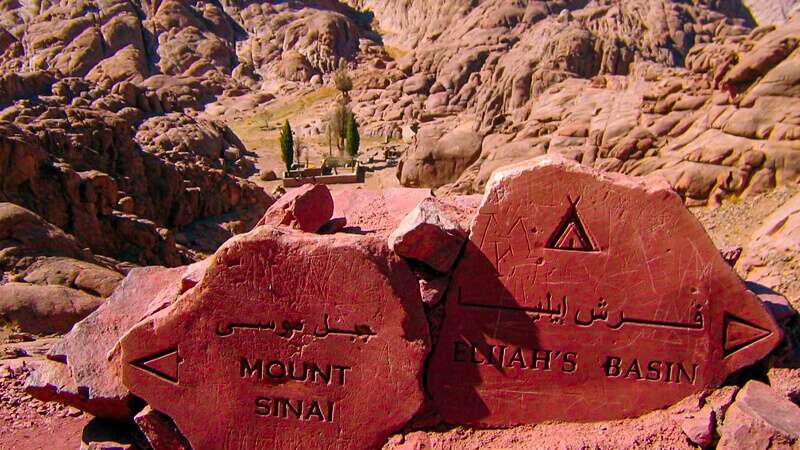
This Basin is a sandy flat that can be found between the northern extension of the mountain and Mount Safsafa and the summit of the hill. In this Basin, there is a cypress tree that is older than thousands of years, and next to this tree, there are six smaller cypress trees and an olive tree that are surrounded by an old well. The primary purpose of this dam is to protect the monastery from flood damage. In addition, it helps to replenish the springs.
Sharif Gate (Gate of Forgiveness):
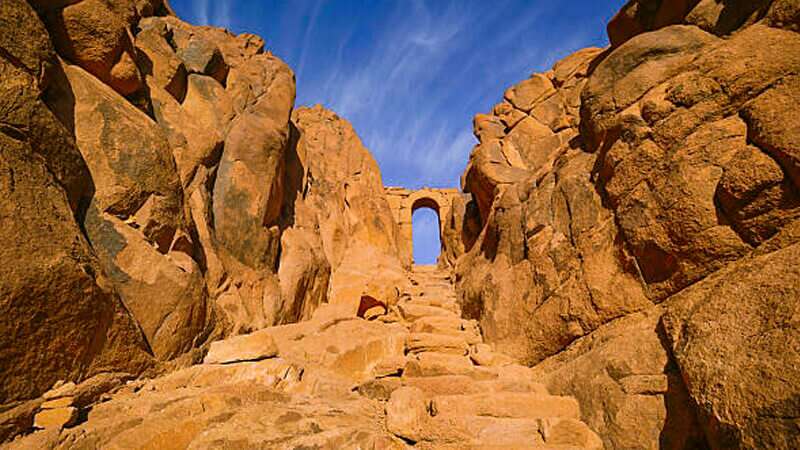
Pilgrims used to come to this gate in the past and confess all of their sins before climbing to the top of the structure in the hopes of receiving blessings from the Lord and redemption from God. Pilgrims carried out this practice up to the eighties of the nineteenth century.
Mount Luza and Ras Safsafa:
There are several churches, gardens, dams, and wells that date back to Byzantine times, and the Elijah Basin is the easiest way to reach these locations. Mount Luza and Mount Ras Safsafa form one massif with Jabal Musa, and at the top, several basins are interconnected with valleys.
Top of Moses Mountain:
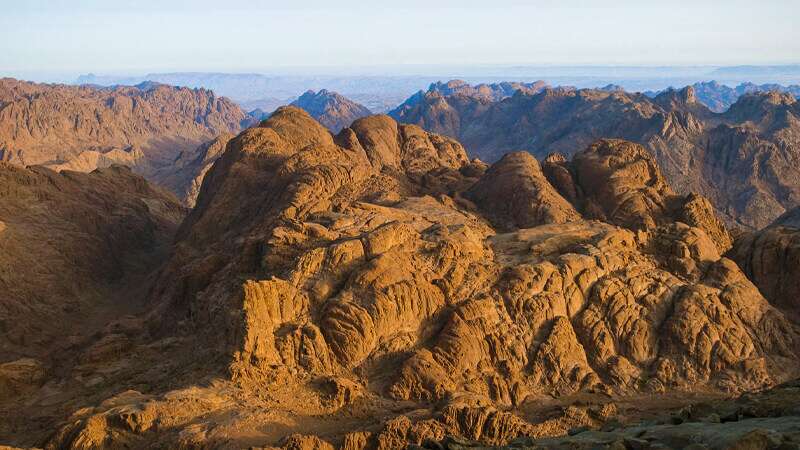
The Church of the Holy Trinity is located atop Mount Moses, in its namesake location. On the site of the ruins of a church that dates back to the fourth or fifth century, this church was reconstructed in 1934. The walls of the church’s interior are covered with murals depicting scenes from the life of Moses, and to the west of the church is a modest mosque constructed in the 12th century. It is said that the traditional cave where Moses spent 40 days and where the Lord appeared to Moses may be found underneath this mosque.
Grendel Valley:
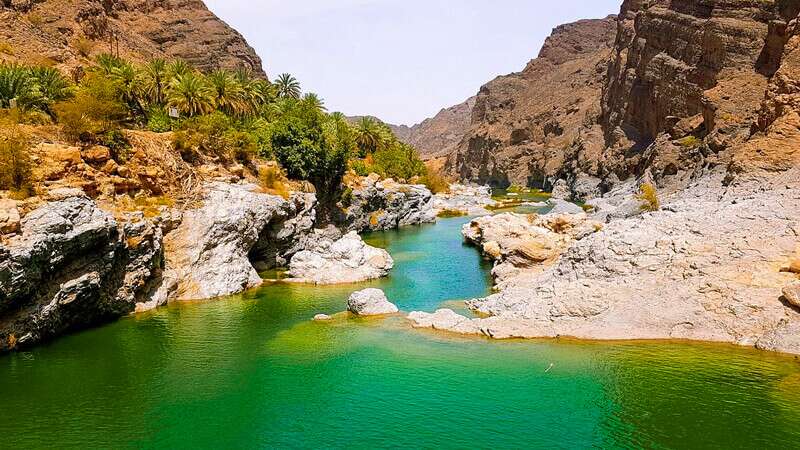
As one of the most beautiful valleys in South Sinai, Wadi Grendel is also one of the most significant. It is home to several oases, as well as a wide variety of desert wildlife. The length of the valley is anywhere from 75 to 85 kilometers, and it is characterized by a very lush flora cover. The valley is flooded by a constant flow of fresh water from the region’s many springs. It would be possible to set up Bedouin lodges in the valley, and three-day safaris would be a popular activity there. A distance of 115 kilometers separates it from the Martyr Ahmed Hamdi Tunnel. The region of Ras Sidr is home to several picturesque towns worth visiting.
Abu Galum Reserve:
In an area known as Wadi Al-Rassa, there is a nature reserve called Abu Galum that looks out over the Gulf of Aqaba. This reserve is notable for its coral reefs, which are home to a vast variety of marine organisms, as well as its sea lagoons, which make for a marine environment that is particularly abundant in its treasures.
As a result of its coral reefs, an underwater cave with a depth of more than 100 meters, and lagoons, the Abu Galum Reserve is a genuine paradise for diving enthusiasts and pros all over the globe, and it is a one-of-a-kind location for engaging in diving activities.
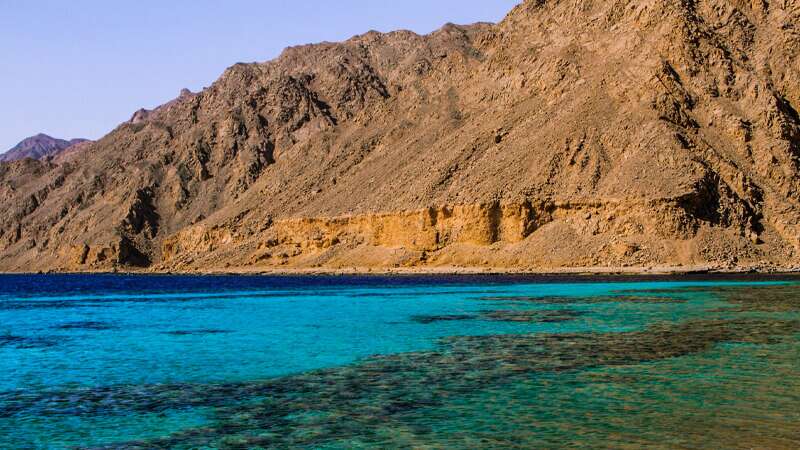
In addition, the reserve is home to a number of valleys. These valleys are distinguished by the height of the mountains located on each side of the valley; these mountains are composed of volcanic rocks that range in color from brown to red.
During your trip to the Abu Galum Reserve, you will also have the opportunity to camp. This area is known for its serene ambiance, particularly at night, which transports you into the vastness of space. If you head to the Al-Ameed and Lagoona areas, you will be able to look up and see the night sky adorned with pearl beads in the shape of stars, which is sure to please those who enjoy practicing meditation.
Ras Mohammed Reserve:
Ras Mohammed Reserve is right at the point where the Gulf of Suez and the Gulf of Aqaba meet. Coral reefs can be found in the waters of the Gulf, which also forms the eastern boundary of the Ras Mohammed Reserve and makes a rocky wall with the seas of the Gulf.
In the waters around Ras Mohammed, it is possible to find coral beaches that are quite deep. This area is also home to many different kinds of colorful fish, endangered sea turtles, and other strange aquatic animals. The underwater cave networks on the island were made when the island was shaken by earthquakes. A lot of rare and endangered animals live in the reserve, like the Nubian ibex, which lives in the highlands. The reserve is also home to nocturnal insects, reptiles, and very small animals. A lot of well-known bird species live in the reserve, such as herons and gulls.

Many people think that the Ras Muhammad Nature Reserve is one of the most beautiful examples of untouched wilderness in the world. Some people have called it “God’s Paradise on Earth” because of how beautiful it is and how many rare species of plants, animals, and marine life live there. Fossils that date back more than 75 million years have been found there. This area has many coral reefs, islands, and animals that can’t be found anywhere else on Earth.
Ras Shaitan island:
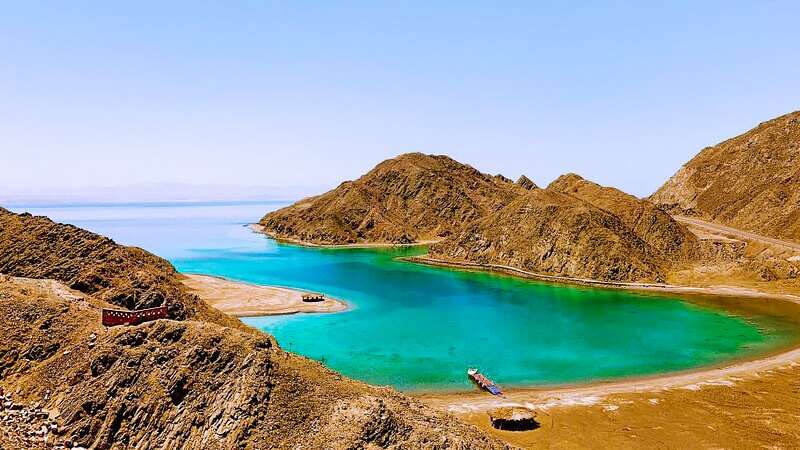
Ras Shaitan Beach is one of the most famous beaches in Nuweiba. It is located between the cities of Nuweiba and Taba in the South Sinai Governorate and near the Colored Valley. It is in the middle of a group of water-covered mountains, valleys, caves, and plains. The area is also famous for its richness in hard coral reefs, octopuses, and puffer fish. And “lunar clusters” and “anemones” in their various shapes and colors, his real name was “Ras Al-Shatin”, meaning “the head of the two beaches”, due to its rock formations that divide it into two beaches, but because of the foreigners’ attempt to pronounce the Arabic name, his name changed to the head of the devil. This beach has amazing mountain views, and is famous for the spread of anemones throughout, and is also a popular diving site, as it includes amazing coral formations and a variety of marine life.
Ras Shaitan area is characterized by calm and picturesque nature, which provides the opportunity for recreation and enjoying clean air in complete isolation, and Haraz indicates that a hut can be rented on a hill overlooking the sea to enjoy the charming scenes of the mountains and the sea together away from the pressures of daily life.
Nuweiba Castle :
also known as Nuweiba Tabia, is a tiny walled stronghold that gives its name to the Nuweiba neighborhood of Tarabin.
The Nuweiba Castle has had a significant military influence and a long and storied history of battles and triumphs.
In 1893, during the Egyptian Sardariyah period, it was constructed. It was part of a group of police camels.
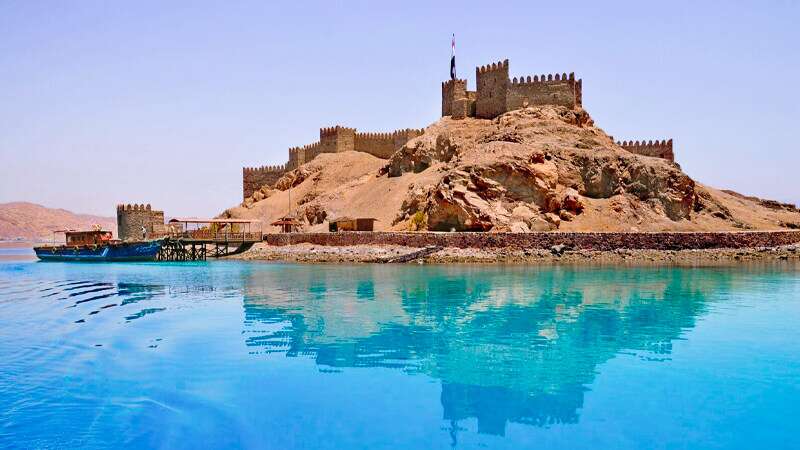
Nuweiba al-Tarabin is a fortified town meant to deter intruders and address any issues that threaten the safety of the local populace.
The castle also benefits from a great position, protecting several highways and the nearby sea from the effects of human habitation.
There was a section of the fortification with homes or panels for the Egyptian police’s Haggana family to live in.
The castle’s defenses include a wall, a series of trenches, and a massive entrance built of sturdy wood. Also, there’s a spring of potable water within.
Tabia Nuweiba, or what is today known as Nuweiba Al-Tarabin, is situated two miles to the north of the Wadi Al-Ain temple.
Dahab City in South Sinai:
Dahab is located on the Red Sea’s Gulf of Aqaba to the southeast of the Sinai Peninsula, and it’s about 135 kilometers north of the well-known resort of Sharm El Sheikh.
Dahab is made up of two different settlements. The southern half is home to the Bedouin settlement of Al-Asla, whereas the northern half is where you’ll find the administrative and economic heart of Dahab.

In Coral Island, the Crusaders constructed a fortress, the ruins of which are still visible today. Dahab got its name because the sand on its pristine beaches is so distinctively golden.
Among the various tourist activities available in Dahab, scuba diving stands out as a top draw due to the city’s reputation for providing some of the best conditions for the sport at some of the lowest prices compared to other resorts in Sinai. Parachuting is another extreme sport, yet neither surfing nor sailing is available in Sharm. Dahab is well-suited to wind sports since the city is surrounded by mountains, which creates a wind tunnel effect. It enhances the velocity of wind currents. The area around Dahab Resort is also well-known for paragliding thanks to the many dedicated training facilities in the area.
Nabq Nature Reserve:
The Nabq Nature Reserve is situated on the shore of the Gulf of Aqaba, on the route that leads from Sharm El-Sheikh to Dahab. It is around 35 kilometers away from the city center of Sharm El-Sheikh, and it covers an area of approximately 600 square kilometers, including both land and sea.
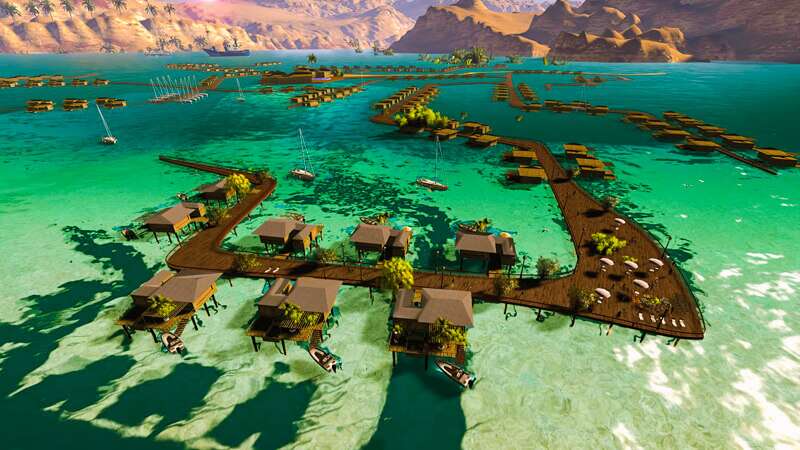
The importance of the Nabq Nature Reserve lies in the presence of a number of different environmental systems within this reserve. The environment in this reserve ranges from a sandy environment that is characterized by sand dunes in Wadi Kid to a valley that is home to a variety of animals and birds, the most well-known of which are foxes, seals, deer, and lint. There is a hilly environment, as well as a plant environment, in addition to the existence of scorpions and egrets. This is on top of the fact that there is also a group of reptiles, rodents, and migratory birds. The Nabq Reserve alone is home to more than 134 different species, although over 80 of those species have become extinct or vanished entirely in other parts of the world.
It is strange to see in the Nabq Reserve a forest of mangrove trees that live in areas of tropical nature. These wondrous trees are able to live among the salt water after you extract fresh water from it and get rid of salt on its leaves as the arc trees spread. As the arc trees spread, these trees are the most famous trees that are used to make toothpicks, which are used to clean the teeth.
Pharaoh’s Island:
Pharaoh’s Island is a tiny island that could be located in Egypt’s Sinai Peninsula, more specifically along the eastern coast of the Sinai Peninsula and to the north of the Gulf of Aqaba.
During the time of Ramses III, the Egyptians set up their first permanent colony on Coral Island, which is now better known as The Picturesque Pharaoh’s Island. Today, this island is also called “Pharaoh’s Island.”
It is in the Red Sea, 11 km south of Eilat, near the eastern shore of the Sinai Peninsula, in the northwest corner of the Gulf of Aqaba, and you can get there by going through the Sinai Peninsula. Eilat is at the end of the Sinai Peninsula, in the south.
It’s not very big (300 meters long and 100 meters wide), and it’s made up of two big boulders that stick up more than 20 meters above the water and are connected by a third, much smaller rock. It measures 300 meters long and 100 meters wide. These are how big it is.
Pharaoh’s Island is a popular place for scuba divers to go because of its beautiful reefs. Coral Island is what the Israelis call it. The boats leave from the Salah ad-Din Hotel, which is on the beachfront road directly across from the island, less than 250 meters (820 feet) from the water, and not far from the Israeli border.
The rebuilt remains of a Crusader fortification that was built in the 12th century are interesting to study because of how important they were in keeping pilgrims safe on their way to the Holy Land. In 1170, Salah ad-Din took control of the citadel and turned it into a fortress that the Arabs could use to fight off the Crusaders. He stayed in this job until 1183 when he gave up and left the castle.
Also, if you stand on top of the Saladin Citadel, you can see all of Egypt, Jordan, and Palestine which is occupied by Israel, and Saudi Arabia. This is possible because the view is so large. The area is surrounded by calm, blue water that is always the same temperature.
Baldwin I, who was King of Jerusalem at the time, is said to have built this castle in 1116 AD and chosen its location, which is on a major trade route between the Middle East and Europe. Since it was first built, when the King of Jerusalem was in charge, invaders have wanted to take it over. This is because it is in a high spot.
Things to do in Mount Sinai Egypt :
Mount Sinai Climb:
It is possible to reach these high heights by several different routes.
Before going on this journey, you must ensure that you are physically healthy enough to handle long and grueling climbs.
Siket Syidna Musa, or the Steps of Penitence, is a 3,750-step stairway that takes you to the summit of the mountain in the shortest and steepest way possible.
Located on the mountain’s northeastern slope, the St. Catherine’s Monastery’s monks carved them into the rock.
Many climbers choose to climb through the night to avoid the heat of the day and, more significantly, to get a glimpse of the stunning sunrise as it happens below them.
A camel or a camel ride may be used to climb this route (El Bashait), which is longer and more challenging.
At several points along the path, climbers may stop for a bite to eat or a cup of coffee and recharge themselves.
Tourists may plan a trip by climbing Moses Mountain (Moses Mountain Climb).
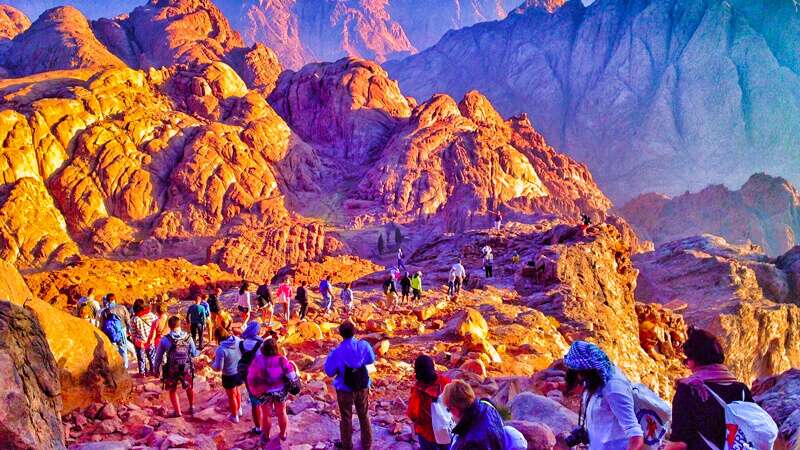
After departing Sharm el-Sheikh in the evening, a typical tour would take around two hours to reach the foot of Mount Sinai, where it would conclude.
It was a beautiful sunrise over this biblical valley and neighboring mountains as we halted after our hike.
In the following days and weeks, you will have the chance to visit St. Catherine’s Monastery.
The Roman Emperor Justinian had this beautiful holy place erected on his instructions between 527 and 565 CE, and it is still standing today.
The spot where Moses is claimed to have seen the Burning Bush, as related in the famous Biblical story, has been surrounded by new buildings.
Trekking the Wadi Al Arbain:
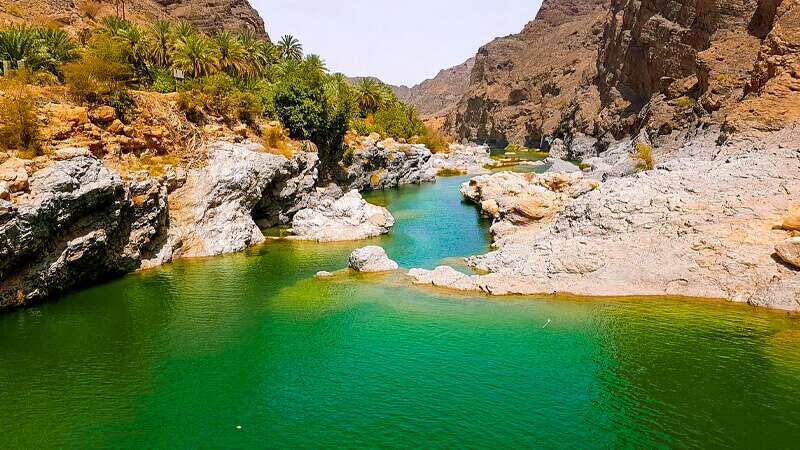
There is another way to get to the top, and it involves climbing Gebel Safsafa, which is the mountain next door. As you go on your trip, you’ll come across several historical places.
This walk starts at Wadi Al Arbain, behind the town of Al Milga. From there, it goes past the Monastery of Forty Martyrs, which was built in the sixth century, the Rock of Moses, which is thought to be the rock that Moses hit with his staff to get water, and a few hermit cells. Elijah’s Basin is where the main route from Mount Sinai and the main road from Wadi Al Arbain meet.
The Steps of Repentance:
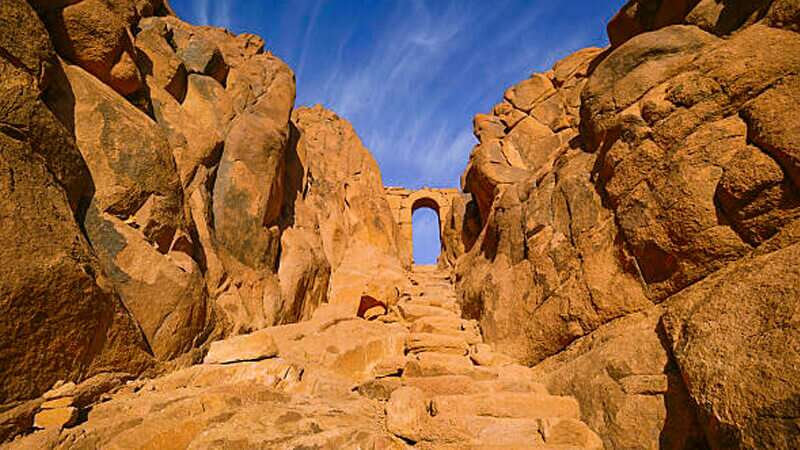
The 3750 Steps of Repentance are another way to get to the top of the mountain from the monastery’s parking lot. Just past the corner of the monastery walls, which are to the southeast, you can find a place to start. As a way to make up for his mistakes, the monk built these stairs. The 3,000 steps that lead up to Elijah’s Basin and the 750 steps that lead up to the top are both made of roughly cut rock, and in many places, they are both steep and uneven. They require strong knees and good foot placement because of the difficulty they present. This trek, on the other hand, is well worth the extra work because the views of the monastery from the lower parts of the route are stunning and the mountain scenery along the way is breathtaking.
Those who want to try both ways to get to the top of Mount Sinai should take the camel trail to the top and then use the steps to get back down.
The Camel Trail:
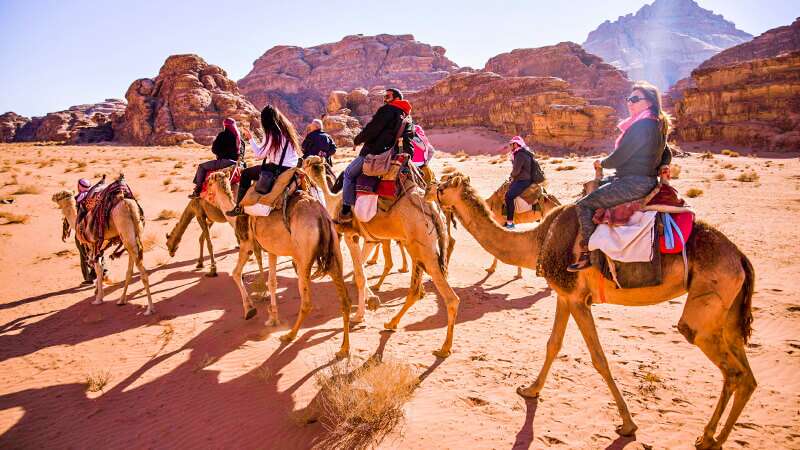
This is the first and easiest way to reach the mountain’s peak. To get to the start of the camel track, walk along the northern wall of St. Catherine’s Monastery past the end of the enclosure until you reach where the section ends. It should take about two hours to climb if you keep going at the same speed. A giant camel trail is marked and goes up in a series of switchbacks at a moderate pace.
Most hikers choose to walk up the mountain, but those who want to can rent a camel at the trailhead, behind the monastery, and ride it to the top (Elijah’s Basin).
On the way up, travelers can stop at stores to buy food and drinks like water, tea, or coffee.
Explore the Thistlegorm Wreck:
The Thistlegorm wreck dive is by far the most popular and well-known wreck dive in the Red Sea. It can be found on the western coast of the Sinai Peninsula, about 40 kilometers from Sharm El Sheikh.
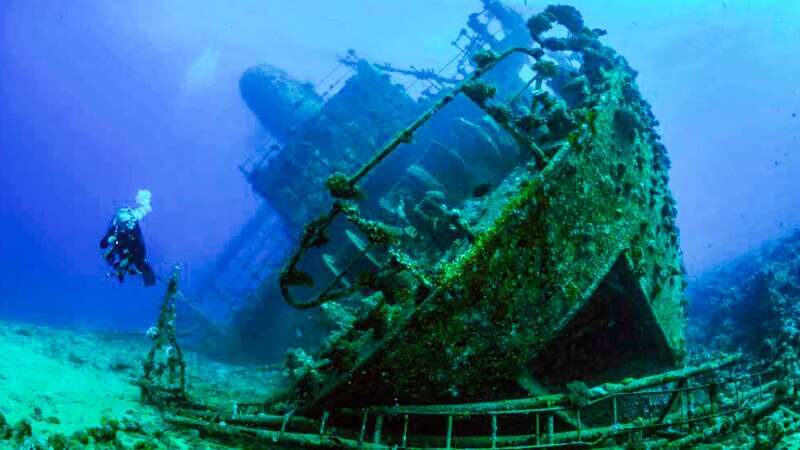
After only 18 months of service, the 125-meter British army ship that had been put into service in April 1940 went down.
When Jacques Cousteau found it in the early 1990s, this wreck quickly became known as the best wreck site in the world among recreational divers. The Thistlegorm is a great place to go scuba diving in the northern part of the Red Sea. It is home to dolphins, turtles, and other marine life, as well as pieces of the Great War. Thistlegorm is a great place to go scuba diving because it has a long history and isn’t too deep, so many divers can go there. Learn more about the ship’s history by taking a tour of its locomotives, the famous Captain’s quarters, and the holds where supplies are kept for the British war effort. When you do a five-meter safety stop at the end of the dive, many curious napoleon wrasses, batfish, and dolphins will gather around you.
Why is Saint Catherine’s monastery important?
Saint Catherine is usually recognized as one of the most stunning and holy cities in Sinai. In addition to being home to a number of significant religious sites, the city is also home to a group of well-known mountains, which attract a large number of visitors who come to take in the breathtaking views of the sunrise and sunset from the summits of these mountains.
At the same time, travelers take pleasure in the winter temperatures of St. Catherine, and watch as snow falls on the mountains and streets of the city; the city has a unique winter atmosphere that is not found in any other Egyptian city or governorate.
Where is st Saint Catherine Monastery located?
Saint Catherine is the most distinguished city in Sinai
It is the highest inhabited place in Sinai, where it is located on a plateau that rises 1600 meters above sea level in the heart of South Sinai,
300 km from the Suez Canal, and its area is 5130 square km,
Saint Catherine is located in the heart of South Sinai, 300 km from the Suez Canal.
It has an area of 5130 km². The city is famous for religious tourism and safari tourism, surrounded by a group of mountains that are
the highest in Sinai and Egypt of them, the highest of which are Mount Catherine, Mount Musa, and Mount Safsafa.
This altitude endowed it with a distinct climate, moderate in summer and freezing in winter,
which gives it a unique beauty when the mountain peaks are covered with snow.
Things to do in Saint Catherine monastery
Al-Aliqa Church:
St. Catherine’s Monastery is home to a monastery that is referred to as “The Church of the Al-Aliqa Church.” This church was established at the sacred bush tree in the fourth century AD by Empress Helena, who was also the mother of Emperor Constantine. In the ninth century A.D., a monastery called “St. Catherine’s Monastery” was established, taking its name from the well-known narrative of St. Catherine.
The ground level of the Al-Alaika Church is 70 centimeters (cm) below the ground level of the Transfiguration Church. The Al-Alaika Church has an area that is 5 meters in length and 3 meters in breadth. It is reported that the tree’s roots still exist in this spot, and it has a modest circular shrine that has been placed on marble columns atop a marble slab that pinpoints the exact site of the tree.
Al-Aliqa Tree:
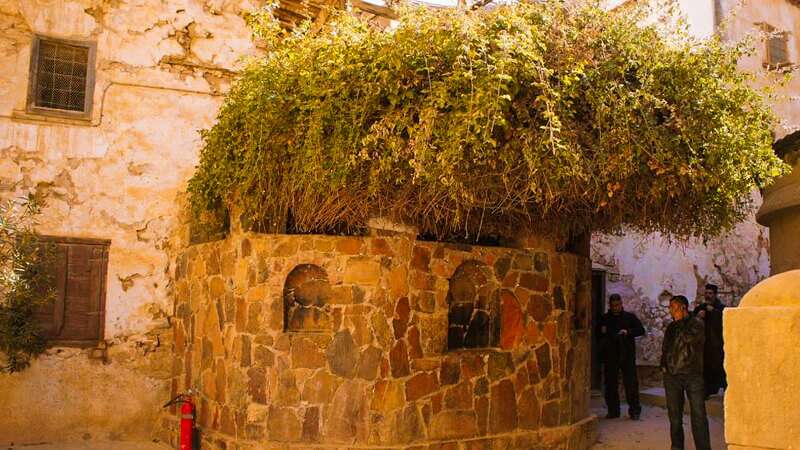
The sacred Al-Aliqa tree, which is currently located in the monastery of Saint Catherine, is the tree in which the Prophet of God, Moses, survived his Lord.
The bush tree and Mount Moses represent a value for all religions from Judaism and Christianity as well as Islam, where the story of the Prophet of God Moses and the Children of Israel was mentioned in several chapters in the Holy Qur’an, and God Almighty honored Mount Al-Tur and made it the status of Mecca and Jerusalem.
The Fatimid Mosque (The Holy Valley Mosque) in Saint Catherine’s Monastery:
During the reign of the Fatimid Caliph al-Amir al-Ahkam Allah, the Fatimid mosque was constructed in the holy places at the monastery of St. Catherine in 500 AH/1106 AD. The mosque is placed in a holy place.
Where the Fatimid Mosque in St. Catherine’s Monastery became a halt for pilgrims on their journey to Mecca, and where they left behind a great number of memorial inscriptions that may still be seen on the mihrab of the mosque to this day.
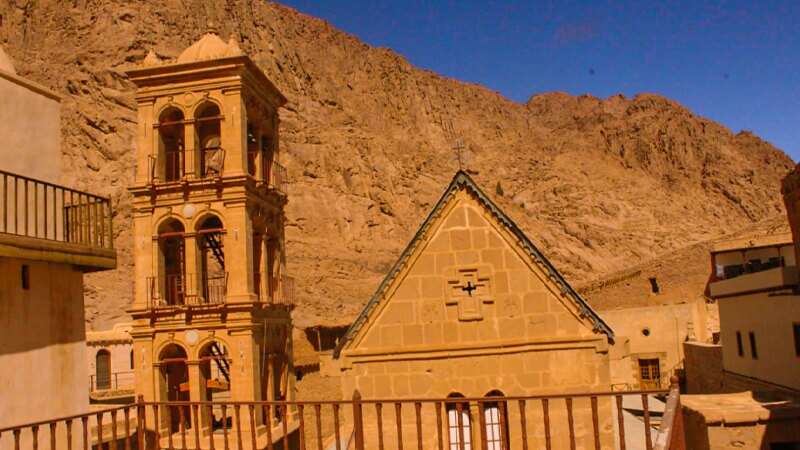
The mosque may be found in the northwestern area of the monastery, and it looks out over the main church. The minaret of the mosque wraps around the bell tower of the church. It has a rectangular layout that is broken up into six sections by semi-circular arches made of carved granite. There are three arches that run along the qibla wall, and there are four that run perpendicular to it. In the older section of the Al-Azhar Mosque, there is a pulpit made of wood that is a verse in beauty. This full wooden pulpit dates to the time of the Fatimid dynasty in Egypt. The minaret of the mosque is quite stunning; it is made up of two cycles, each of which has a square cross-section, and this particular design can only be seen in Egyptian mosques. This acceptance and harmony is the glue that holds the world’s religions together.
The Church of the Transfiguration:
The building that gets the most attention in the whole monastery is without a doubt the Church of the Transfiguration. Emperor Justin of Byzantium was the one who gave the order to start building the structure. The door is made of wood and is covered with beautiful carvings it. Inside the chapel, three huge stone columns separate the different rooms. It has art with religious themes all over its walls, from the ceiling to the floor. Inside a mihrab is a stunningly ornate coffin that is said to hold the bones of a well-known and respected Muslim person. The casket that held the holy relics of Saint Catherine was given to the family as a gift by Catherine the Great, the Russian Empress. You can find the church behind the mihrab.
One of the most beautiful mosaic panels in the whole monastery is in the church. It is called the Transfiguration panel, and it shows the moment when Christ and other prophets, saints, and apostles were changed into saints. The panel is in the church, and it was made in the year 542.
St. Catherine’s Monastery Museum:
The Sacred Repository, which is also called the museum of the monastery, is down some steps to the west of the Transfiguration Church. The museum has a wide range of sacred, creative, and symbolic writings, as well as a beautiful collection of artifacts from long ago. The first thing you can see in the museum is a painting from the 12th century after Christ. Also, the monastery’s basement has a collection of parchments and manuscripts that go all the way back to the oldest Bible copy that has ever been found.
What are the best times to visit Saint Catherine?
It is recommended that you visit the city during the winter; if you enjoy seeing snowfall from the mountains, you will have the opportunity to view snowfall in Saint Catherine during the months of December, January, and February.
In addition, Saint Catherine has pleasant weather during the spring and summer months, particularly during the months of March and April.
Don’t miss to book one of our trips to Sinai and Saint Catherine :
Best Things To Do In Sinai Egypt
Mount Sinai & St. Catherine Monastery Day Trip
4 Days Cairo & St. Catherine Private Tour Package
7 Days Cairo, Sharm El Sheikh St. Catherine Monastery
Overnight Trip To St. Catherine Monastery From Cairo

